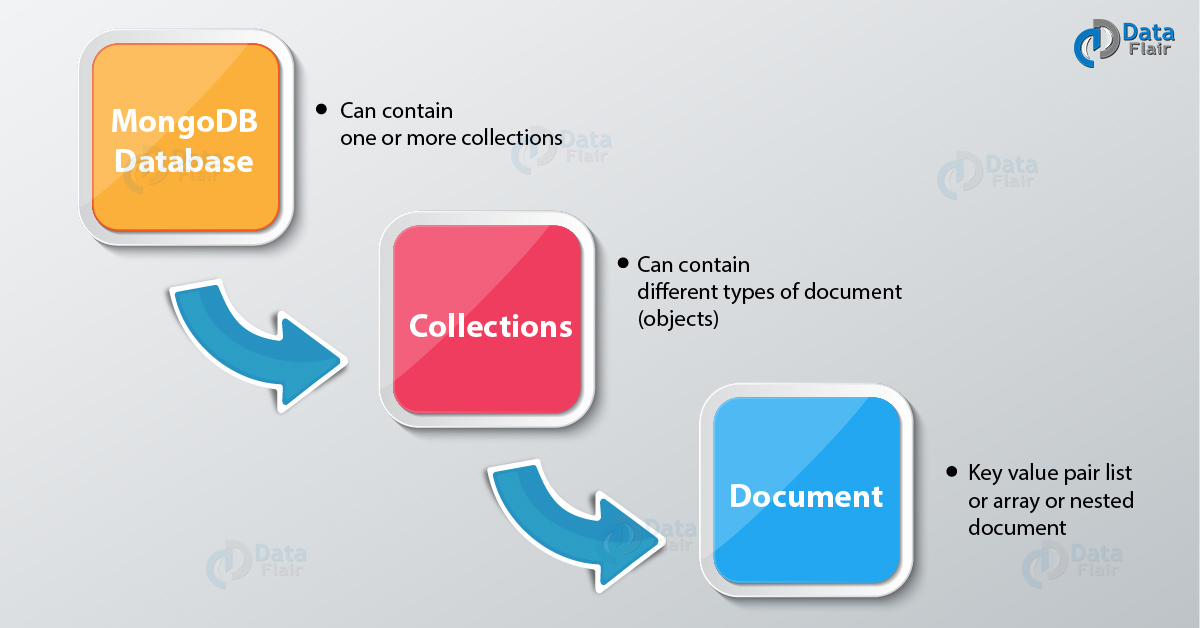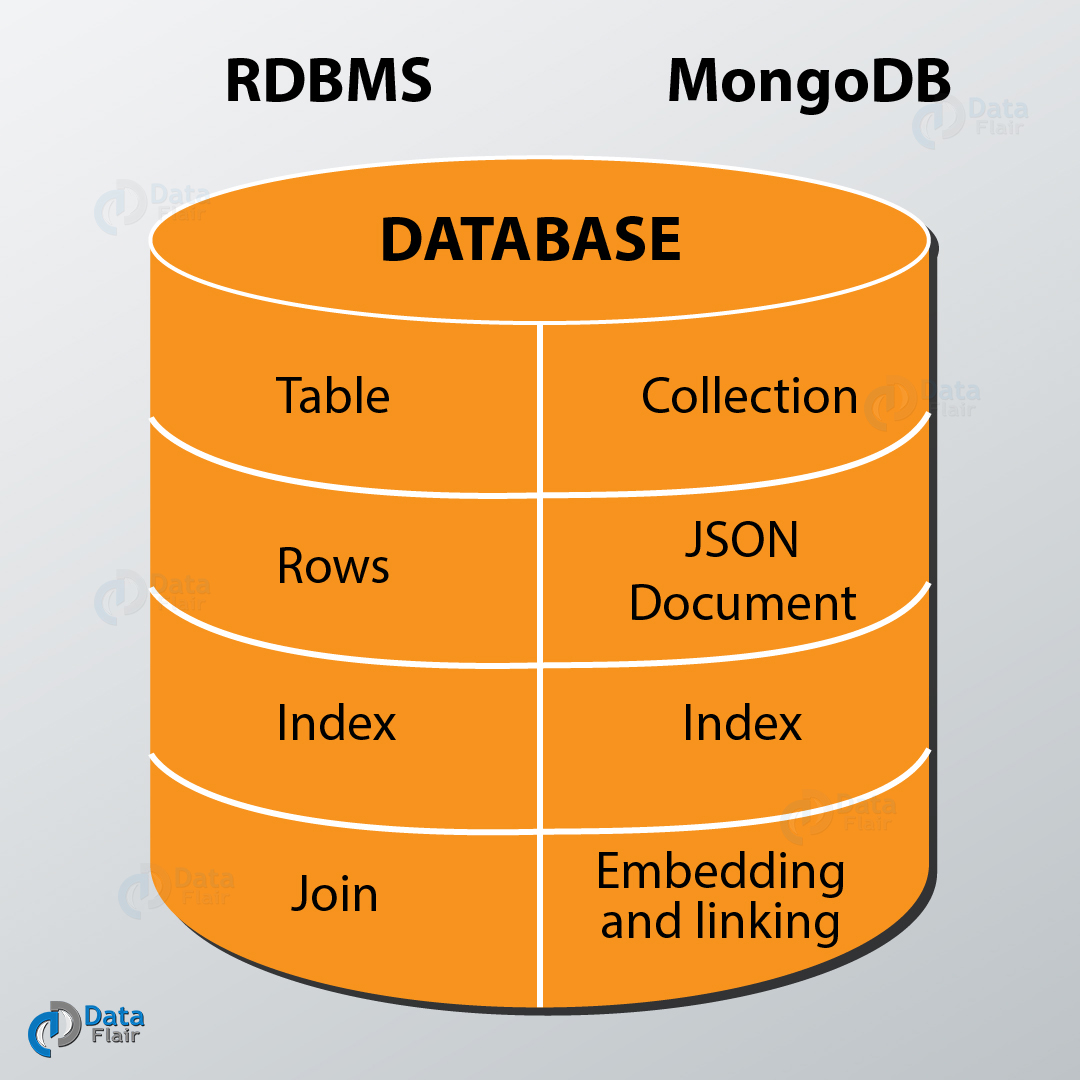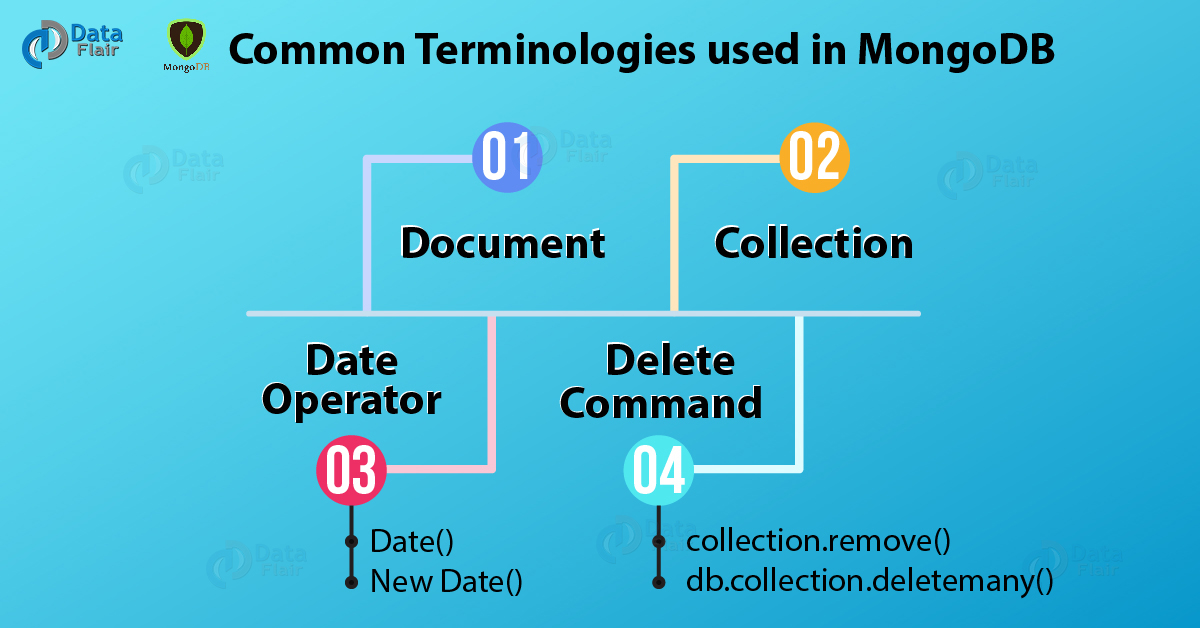MongoDB Tutorial for Beginners (Complete Guide) – Learn MongoDB in 15 Min
FREE Online Courses: Elevate Skills, Zero Cost. Enroll Now!
A rasing technology capturing the focus of developers that is MongoDB. MongoDB, is an open source, document-oriented database that stores data in the form of documents.
In this MongoDB tutorial for beginners, we will study everything about what is MongoDB and how it works, pre-requisites, applications, benefits, limitations etc. to learn MongoDB like an expert.
So, are you excited to see MongoDB Tutorial for Beginners?
What is MongoDB and How it Works?
MongoDB is a NoSQL(Not only Structured Query Language) database program, which is cross-platform document-oriented. It is an open source database management system, which supports various forms of data.
It gained popularity in the mid-2000s for its use in big data applications and also for the processing of unstructured data.
MongoDB architecture is made up of collections and documents. It uses BSON format for document storage, which is a binary form of JSON documents. Its server does not have any downtime when you are dynamically modifying the schemas.
It means that the user has more time to work harder on the data rather than wasting time in preparing the data for the database.
Prerequisites for Learning MongoDB
This MongoDB Tutorial for Beginners covers the prerequisites, that you should know before getting started to learn MongoDB.
- Knowledge of any programming language.
- Knowledge of JavaScript
- Knowing JSON will be helpful
- Some knowledge of RDBMS
- Knowledge of any text editor
Introduction to NoSQL Database
Many of you might have heard about NoSQL, it is a kind of database used to manage unstructured data i.e which comes from various locations like social media, banking, stock market etc. It is basically having no rows or columns in it.
NoSQL is playing a vital role in handling this huge amount of data, which is changing and growing at a very fast rate. A relational database is not fit for handling this kind of data which keeps on changing so rapidly.
Hence, the NoSQL database is being designed to overcome all the disadvantages of a relational database in context with today’s world.
MongoDB Vs RDBMS
Following are some of the points which tell us the difference between MongoDB and RDBMS.
- RDBMS is having a relational database but MongoDB has a non-relational database.
- In RDBMS we need to design the table then only we can start coding but in MongoDB, we can directly start coding.
- RDBMS supports SQL language and MongoDB supports SQL as well as JSON query language.
- RDBMS is table based whereas MongoDB is key-value based.
- MongoDB is document based whereas RDBMS is row based.
- RDBMS is column based whereas MongoDB is field based.
- RDBMS is not that easy to set up but MongoDB is comparatively easy to set up.
- MongoDB is horizontally scalable, on the other hand, RDBMS is vertically scalable.
- RDBMS processes the data very slow as compared to the unstructured data of MongoDB.
- RDBMS accentuates on ACID (Atomicity, Consistency, Isolation, Durability) properties. On the other hand, MongoDB accentuates on CAP (Consistency, Availability, Partition tolerance) theorem.
Why MongoDB is Used?
MongoDB is having many features with itself as it is handling NoSQL data, which is being generated nowadays in TB’s within a fraction of seconds. So to handle this large amount of data and also to get some useful information out of it we are using MongoDB.
- Queries
- Indexing
- Load Imbalance
- Handling Multiple Servers
- File Storage System
- Aggregation
- High Performance
i. Queries
It supports range query, regular expression and many more types of searches for queries. MongoDB supports ad-hoc and document-based queries.
Queries include user-defined JavaScript functions and can also return specific kind of data out of the document. It can also return a random sample of data of a given specified size.
ii. Indexing
Fields in the document can be indexed either as primary or secondary. MongoDB is also capable of handling and dealing with the replication in data. As we know that replica sets contain the same data with more than one copy of itself.
Each replica will try to put itself in either the primary or secondary index. Generally all the read and write processing on the data is done by using the primary index but sometimes it may happen that the primary index of the replica fails due to some reason.
So at that time, the replica set goes under election process as to which secondary index of replica should be chosen to go for further processing by either read or write operation. Most of the times the secondary one is being used for a write operation and it is rarely being used for reading operation.
iii. Load Imbalance
With the help of sharding MongoDB scales horizontally. The user is given a chance to choose a shared key with the help of which it can determine, how the data in a collection will be distributed.
Here, the data is being split into ranges based on the shard key and then is distributed across multiple shards. Here, the shard will act as a master with one or more slaves with itself. This can also be done with the help of hashing which will result in even distribution of data all along.
iv. Handling multiple servers
MongoDB can run on multiple servers at the same time while handling the duplicate data and also balancing a load of data even in cases, where there might be chances of hardware failure.
v. File storage system
This mechanism of storing the data while handling the load and also checking out for any replication of the same data at multiple sites is called as GridFS (Grid File System). This function is being added with the MongoDB drivers.
GridFS can be accessed with the help of mongofiles utility or different kind of plugins. GridFS breaks the file into smaller parts and stores each part as a separate document.
vi. Aggregation
It has three different ways to perform aggregation and they are as follows:
- Aggregation pipeline
- Map-Reduce function
- Single Purpose Aggregation Methods.
In the aggregation pipeline, they use pipelining so that the processor is not an ideal state and also that each process is related to the output of the earlier process in the pipeline.
Map-reduce can be used to do batch processing of data and aggregation operation too. But this can be handled well with the help of aggregation pipeline.
vii. High Performance
Here, the input/output operations take less time to execute as compared to the relational database. Queries are also being executed in a fast pace as compared to the relational database.
Advantages of MongoDB
Here are some of the benefits of MongoDB:
- Very easy to install and setup MongoDB.
- It is a schema-less database.
- Very easy to scale.
- As it is a NoSQL database, it is secured from any kind of sql injection.
- No need to map application objects to data objects.
- It can be used as a file storage system.
- It supports search by regex and fields as well.
- Deducible documentation is available.
Disadvantages of MongoDB
As we all know that a coin has two sides so with such amazing advantages there are some disadvantages with MongoDB. They are as follows:
- It does not support the transaction
- MongoDB does not support joins.
- RAM limitation.
Common Terminologies used in MongoDB
This MongoDB Tutorial for beginner cover almost all the topics, which will add into beginners learning. Here, we will discuss some mostly used terminology in MongoDB.
i. Document
This is the basic unit of storing information over here. It is an ordered set of a key-value pair, where for every key there exists an associated value with it.
e.g. {“first”: “Hello, world!”}
Where first is the key and Hello, the world is the value.
ii. Collection
It is a group of documents. In terms of RDBMS, it is a table which contains rows in it.
iii. Date Operator
We can use it to see the date. Command that we use to write the date is as follows:
- Date() – returns current date as string.
- New Date() – returns the current date as a data object.
iv. Delete Command
We can use it to delete anything from MongoDB. A command for the same is as follows:
- collection.remove() – Deletes a single document that matches a filter.
- db.collection.deletemany() – Deletes all the specified documents that match the filter.
MongoDB Editions
MongoDB is having two types of editions and they are as follows:
- Community server – is totally free and we can use it for Windows, Linux and os x also.
- Enterprise server is the commercial edition of MongoDB, available with MongoDB Enterprise Advanced subscription.
Where & Who are using MongoDB?
We can use MongoDB for large scale projects where data changes dynamically. All the modern applications require big data processing, fast feature development, easy access and many more features which are being provided by MongoDB. Here are some areas where MongoDB is nonpareil are:
- Big data
- Data Hub
- Mobile and Social infrastructure
- User Data Management
There are many big organizations which are using MongoDB database for their business applications and they are as follows:
- Adobe
- SAP
- eBay
- McAfee etc.
Future Scope of MongoDB
The future of MongoDB ahead is very bright. We should not let MongoDB be a data warehouse but we should strengthen it by extending the operational apps that would natively stay on the platform for further use.
It can also be used for Hadoop and big data purpose for processing the data in a very fast manner. This will help us to get useful information in a very short time span. This will lead to an emergence of many more applications that will help human save their time and money.
So, this was all about MongoDB Tutorial for Beginners. Hope you like our explanation.
Summary of MongoDB Tutorial for Beginners
Hence, in this MongoDB tutorial for beginner, we got to know what MongoDB is used for, some features related to it, advantages and disadvantages of MongoDB and the various editions of MongoDB that people can use for. So start learning MongoDB and give a kick start to your career.
Furthermore, if you have any query or doubt, feel free to approach us!
If you are Happy with DataFlair, do not forget to make us happy with your positive feedback on Google





MongoDB is horizontally scalable, on the other hand, RDBMS is vertically scalable.what does it mean